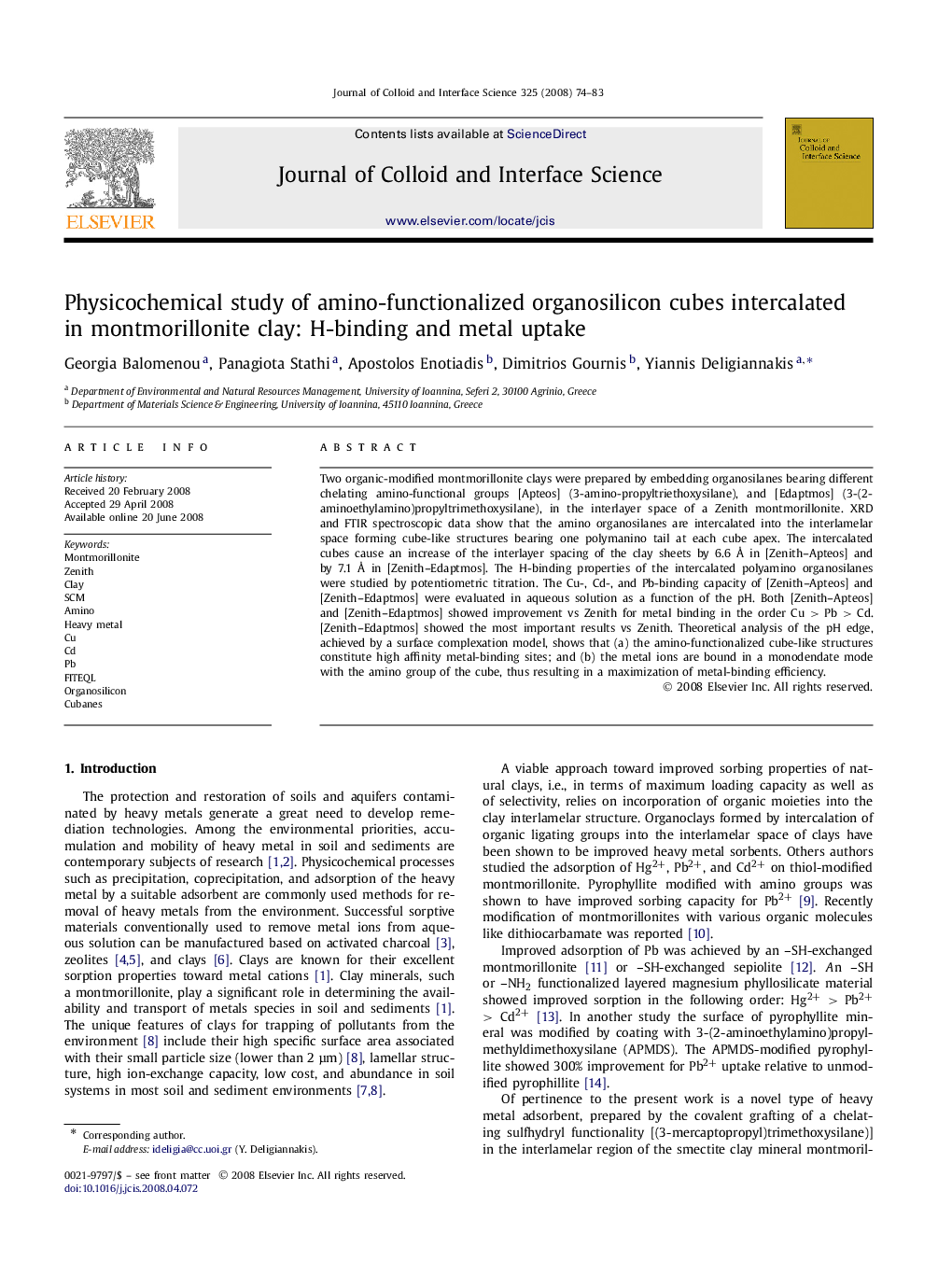| Article ID | Journal | Published Year | Pages | File Type |
|---|---|---|---|---|
| 611044 | Journal of Colloid and Interface Science | 2008 | 10 Pages |
Two organic-modified montmorillonite clays were prepared by embedding organosilanes bearing different chelating amino-functional groups [Apteos] (3-amino-propyltriethoxysilane), and [Edaptmos] (3-(2-aminoethylamino)propyltrimethoxysilane), in the interlayer space of a Zenith montmorillonite. XRD and FTIR spectroscopic data show that the amino organosilanes are intercalated into the interlamelar space forming cube-like structures bearing one polymanino tail at each cube apex. The intercalated cubes cause an increase of the interlayer spacing of the clay sheets by 6.6 Å in [Zenith–Apteos] and by 7.1 Å in [Zenith–Edaptmos]. The H-binding properties of the intercalated polyamino organosilanes were studied by potentiometric titration. The Cu-, Cd-, and Pb-binding capacity of [Zenith–Apteos] and [Zenith–Edaptmos] were evaluated in aqueous solution as a function of the pH. Both [Zenith–Apteos] and [Zenith–Edaptmos] showed improvement vs Zenith for metal binding in the order Cu > Pb > Cd. [Zenith–Edaptmos] showed the most important results vs Zenith. Theoretical analysis of the pH edge, achieved by a surface complexation model, shows that (a) the amino-functionalized cube-like structures constitute high affinity metal-binding sites; and (b) the metal ions are bound in a monodendate mode with the amino group of the cube, thus resulting in a maximization of metal-binding efficiency.
Graphical abstractIntercalation of amino-functionalized organosilicon cubes in montmorillonite clay enhances metal uptake.Figure optionsDownload full-size imageDownload as PowerPoint slide
